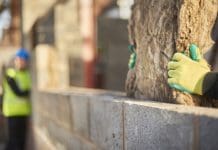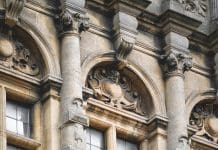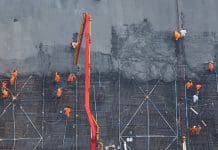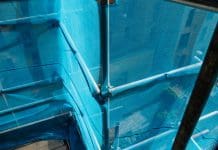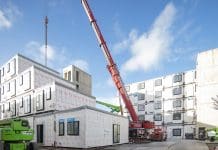Officials are set to review building regulations after the tower block fire raised major concerns over the issue of safety
The tower block blaze that killed at least 80 people has prompted a major review of building regulations across England.
The decision follows significant concern over the status of safety measures in place after cladding on the tower block in London enabled the fire to spread throughout the building.
The fire caused widespread panic across the country as other high-rises were found to have the same combustible cladding installed. While it is within building regulations to allow the use of combustible insulation on buildings of more than 18m in height there are strict rules that must be adhered to when doing so.
However, the BBC’s Newsnight said despite the rules there are weaknesses in the system that must be addressed.
Compliance
The first is the regulation itself, which states materials used in cladding can be either “non-combustible” or of “limited combustibility”. This route to gaining sign off on a building is said to be the simplest to compliance. The rule states that as long as every part attached to the building meets this standard no further action is necessary.
However, the regulation has left some developers, cladders and architects believing it only applies to the insulation on the outside of the building, not the external cladding.
Adrian Buckmaster, director of cladding company TetraClad, said: “The government is now… saying that both the insulation layer and the outer layer they believe should be of a… non-combustible class, whereas if I read the documents as they are at the moment, the clauses specifically say just the insulation and the outer layer is a completely different standard.”
Fire test
Newsnight said the second route was to commission a fire test. The evidence from this can be used to persuade building inspectors to sign off a building. However, there are concerns this test—called BS 8414—is not robust as it is based on the installation of a perfect portion of wall. This does not reflect wear and tear that could make the material more susceptible to fire nor does it take into account poor installation of the cladding.
Desktop studies
The third route is through desktop studies. This entails using evidence from a similar design that has already been tested. This means it will not require new testing. However, this could see different materials compared. A previously tested design may have used ceramic tiles while a new one may have aluminium composite panels.
Desktop studies are also confidential to the sponsoring organisation, which is often the manufacturer. This means developers rely on vague product information to help them chose what to distribute.
Newsnight said it had found the NHBC would sign off on combustible insulation and combustible aluminium panels without commissioning a desktop study due to the volume of fire-test data and studies reviewed. The NHBC said it has suspended this guidance.
While it is unclear when the government review will occur, it is likely the process will be stymied or made difficult by ongoing police investigations and the planned public inquiry.


